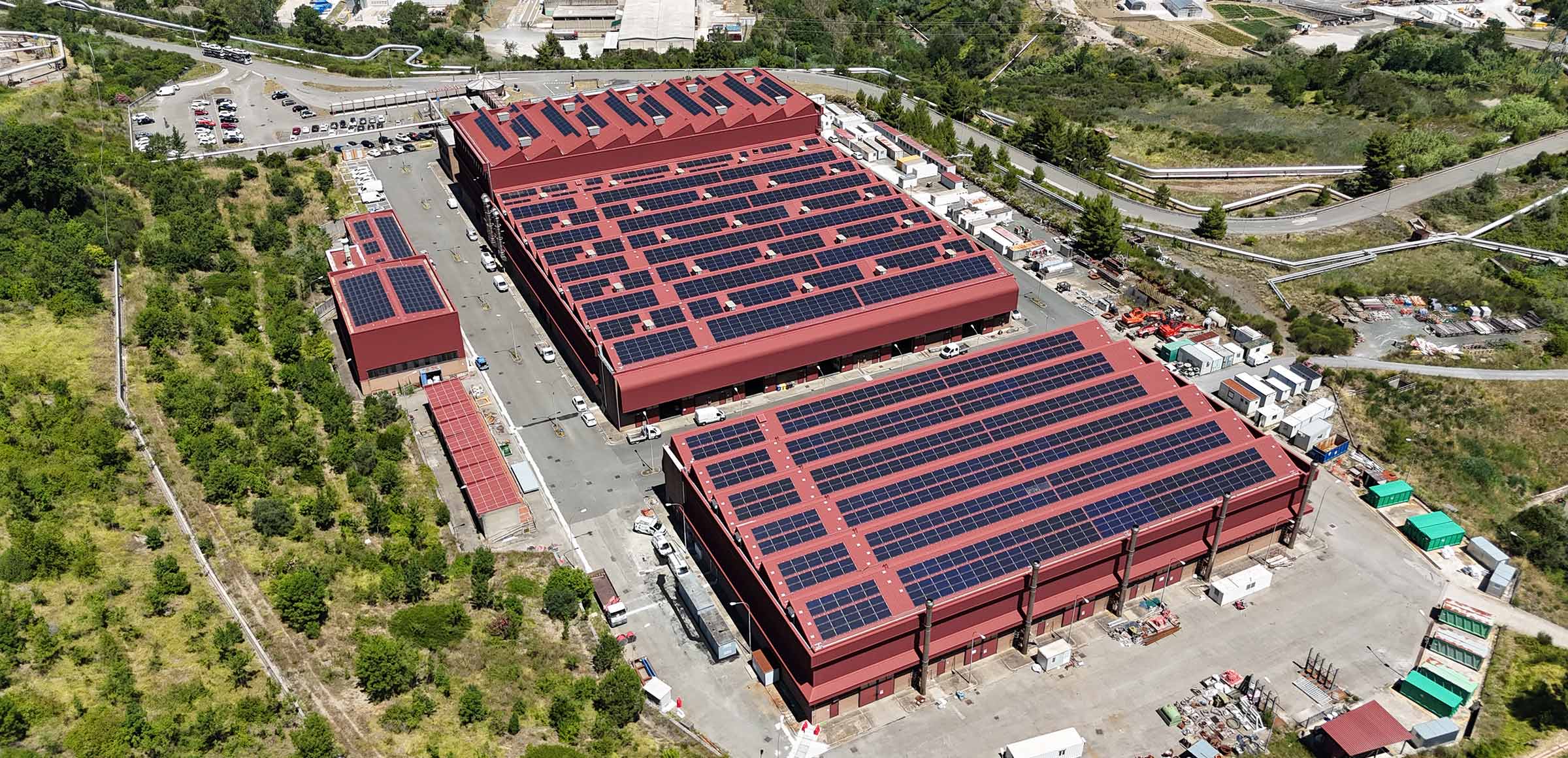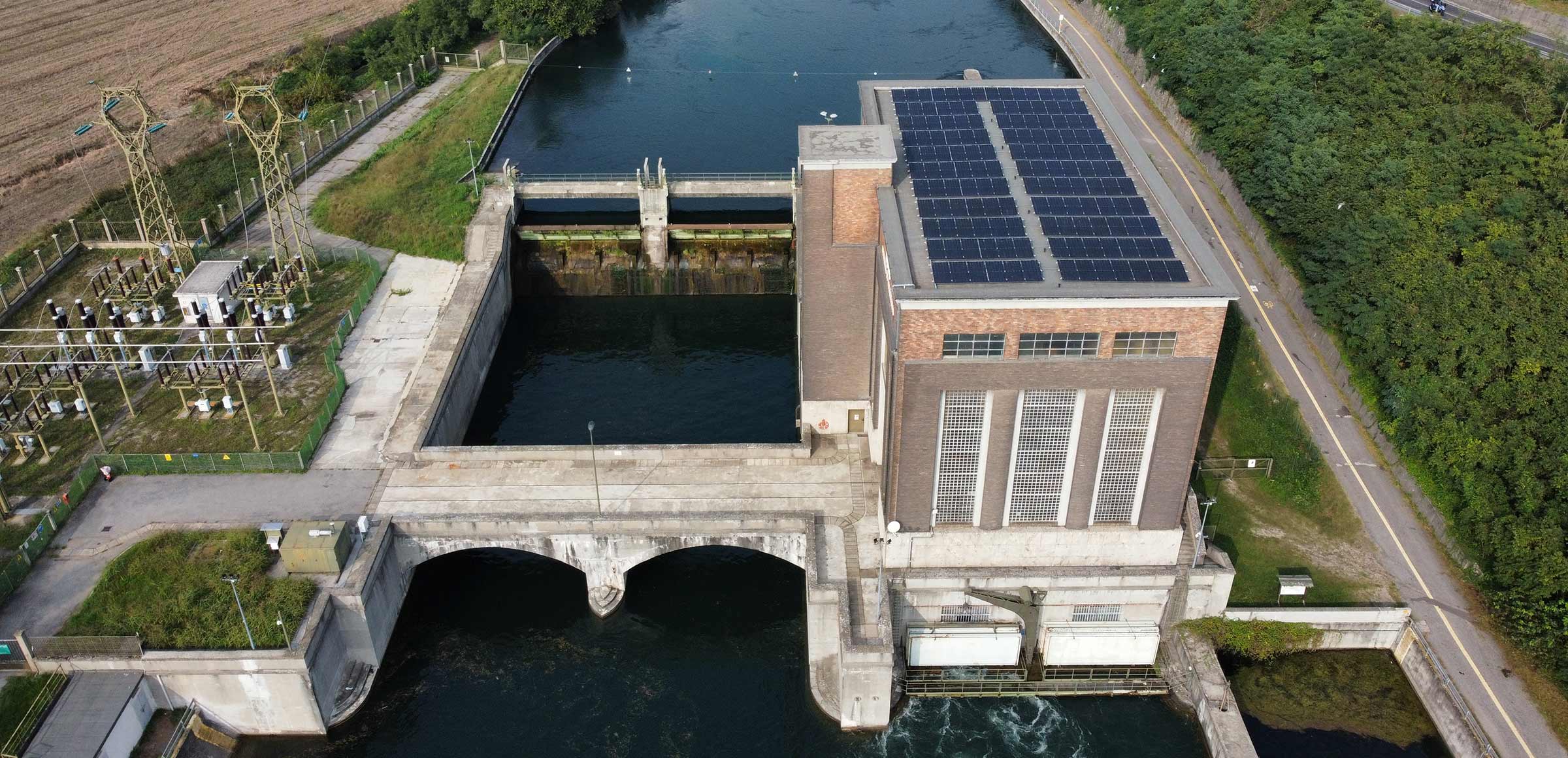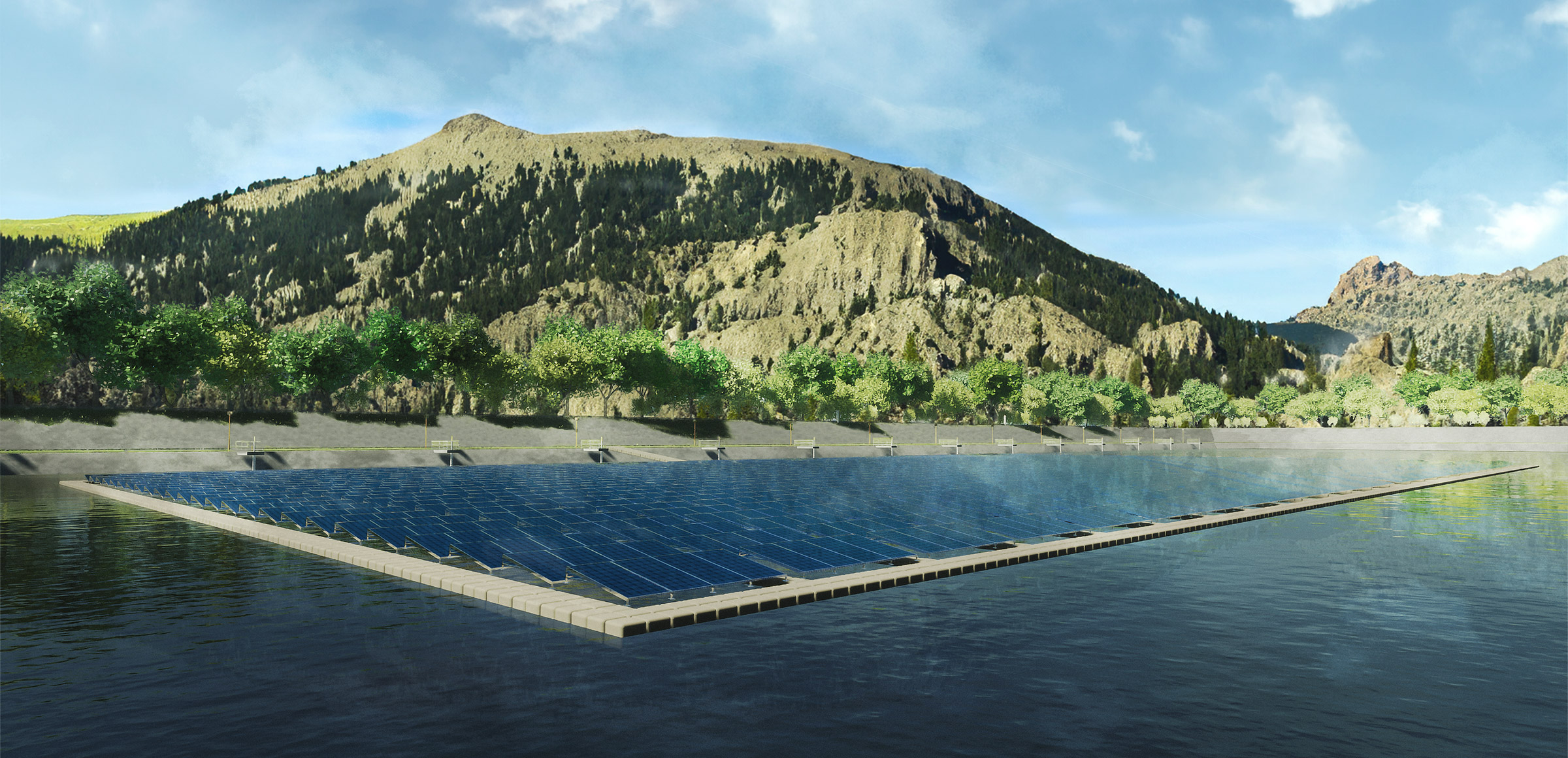Plant hybridization is the new frontier of repowering and it entails the integration of different types of technology within the same site. In Italy this process has already seen the implementation of pioneering projects such as those at Venaus.
In order to increase energy production, it isn’t always necessary to build a new power plant from scratch: repoweringcan be used in certain cases. Indeed, this solution makes it possible to install more modern, high-performance components or adopt more advanced technology at existing plants. Operating efficiency is thus improved and the so-called “useful life” of a plant is extended, while environmental impact is reduced, as are costs.
More than 20 hybrid plants have already been built
In 2022 we started using a particular form of repowering known as hybridizatio, which combines different types of technology within the same site. And in about a year, in Italy, we built more than 20 small photovoltaic plants at our power plants, with a total capacity of about 4 MW. Of these, more than half are already connected to the Grid, while the others are in the process of being connected.
Venaus, home to our first floating photovoltaic plant
The hybrid plant at Venaus, Piedmont, where we recently built our first floating solar park, was inaugurated earlier this year. This is an innovative project that combines sustainability and advanced technology.

Double-sided photovoltaic moduleshave been installed on a reservoir at the Val Cenischia hydropower plant, taking advantage of the natural reflection of the water and the panel’s performance-enhancing cooling in order to maximize power generation. With a capacity of 1 MW and a projected annual output of about 1,200 MWh, the system not only generates electricity but also helps reduce water evaporation from the reservoir, thus preserving a valuable resource. This solution is without impact on the landscape, a crucial aspect in an area of outstanding natural beauty.



Other examples of energy efficiency
A good example of integrating renewables in an area that’s suitable for green energy production can be found at Larderello, Tuscany, where some 3,000 photovoltaic modules have been installed on the roofs of the workshops at the historic geothermal power plant.
The new plant, which has a total capacity of 1.18 MW, went into operation in 2023, thereby contributing to the goal of integrating geothermal and solar power generation. The project was entirely managed in-house, from the identification of available surfaces to the design and construction of the plant, thus demonstrating the effectiveness of an end-to-end approach.
The Narzole project in (Cuneo, Piedmont), which has already obtained the necessary authorization, thanks to the support of local government authorities, will also become operational in the near future. The authorities have in fact recognized the importance of the initiative and, since it is a pre-existing artificial structure, have given it a simplified authorization process.
A strategic investment
These projects are just the start for an ambitious repowering plan, which aims to make Italy’s energy infrastructure increasingly efficient, sustainable, and innovative. As part of our 2024-2026 strategy, an investment of about €1.1 billion is planned for the upgrading of existing power plants. This commitment will result in the refurbishment of 4.4 GW of hydro and wind power capacity, with an estimated production increase of 1 TWh per year. In this way, we are building renewable generation facilities without further land consumption.


